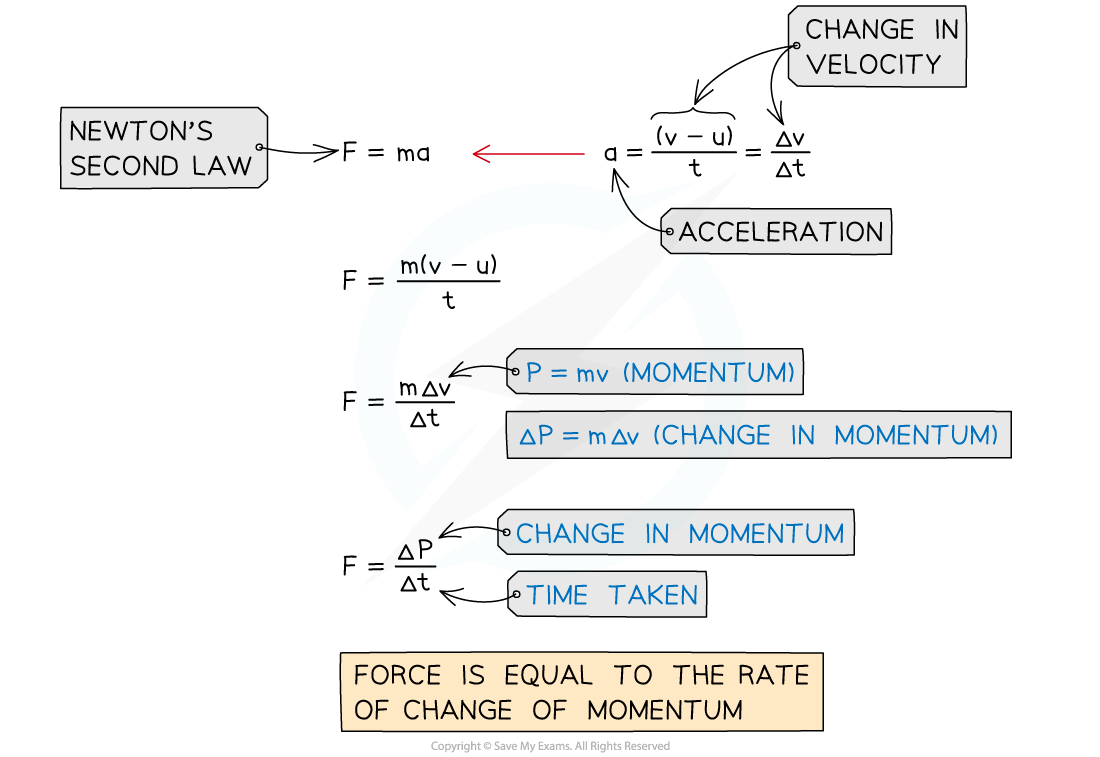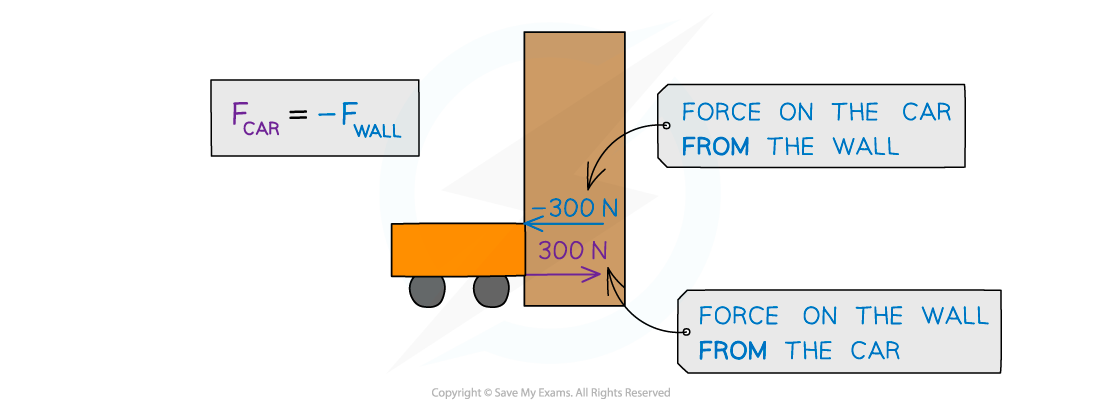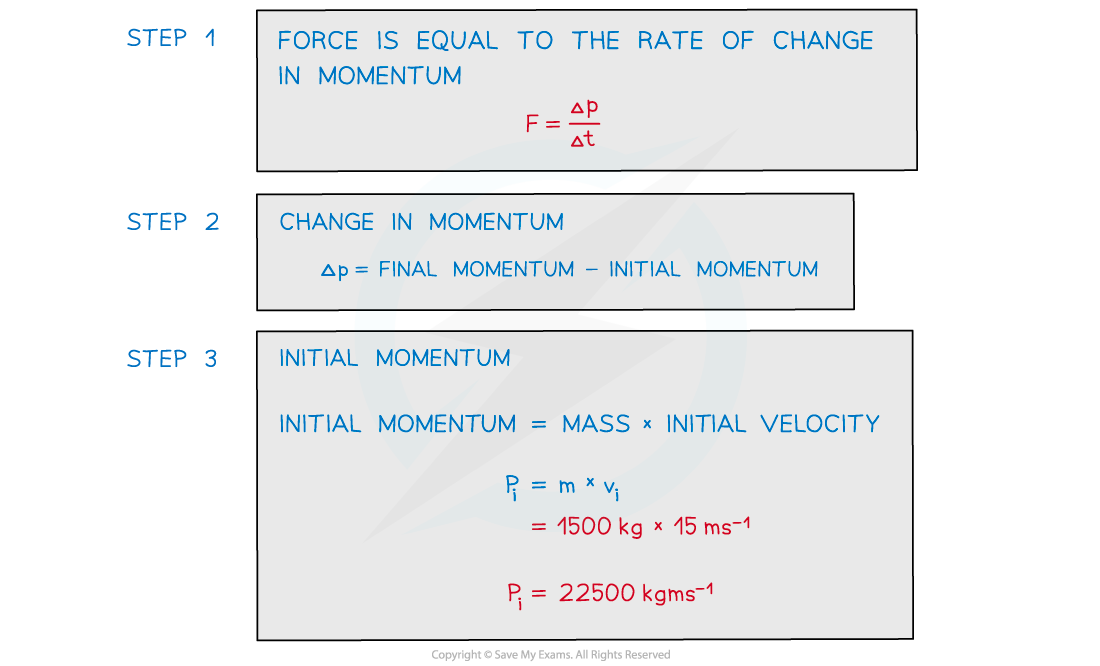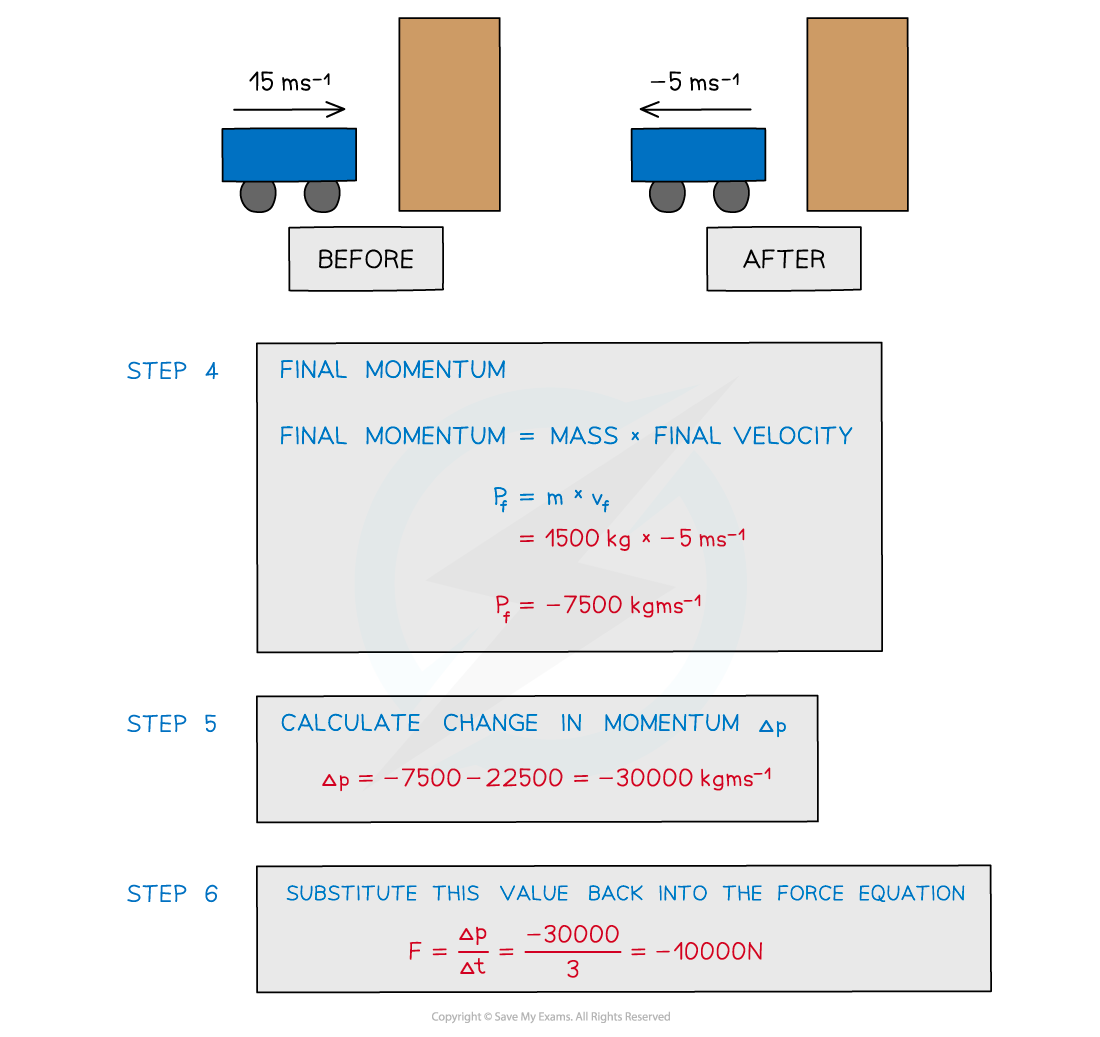Force & Momentum (DP IB Physics) : Revision Note
Force & Momentum
The resultant force on a body is the rate of change of momentum
The change in momentum is defined as:
Where:
Δp = change in momentum (kg m s–1)
pf = final momentum (kg m s–1)
pi = initial momentum (kg m s–1)
These can be expressed as follows:
Where:
F = resultant force (N)
Δt = change in time (s)
This equation can be used in situations where the mass of the body is not constant
It should be noted that the force in this situation is equivalent to Newton's second law:
This equation can only be used when the mass is constant
The force and momentum equation can be derived from Newton's second law and the definition of acceleration

Direction of Forces
Force and momentum are vector quantities with both magnitude and direction
The force that is equal to the rate of change of momentum is still the resultant force
The positive direction is taken to be the direction of the initial motion; therefore:
a force on an object will be negative if the force opposes its initial velocity
the opposing force is exerted by the object it has collided with
the forces will be of equal magnitude and opposite in direction, in accordance with Newton's Third Law

The car exerts a force on the wall of 300 N, and due to Newton's third law, the wall exerts a force of -300N on the car
Worked Example
A car of mass 1500 kg hits a wall at an initial velocity of 15 m s−1.
It then rebounds off the wall at 5 m s−1. The car is in contact with the wall for 3.0 seconds.
Calculate the average force experienced by the car.
Answer:


Examiner Tips and Tricks
The direction you consider positive is your choice, as long the signs of the numbers (positive or negative) are consistent with this throughout the question.
In an exam question, carefully consider what forces are exerted on what objects. Look out for words such as ‘from’, ‘acting on’ or 'exerted on' to determine this, and sketch a quick free body force diagram if you need to.

You've read 0 of your 5 free revision notes this week
Unlock more, it's free!
Did this page help you?
